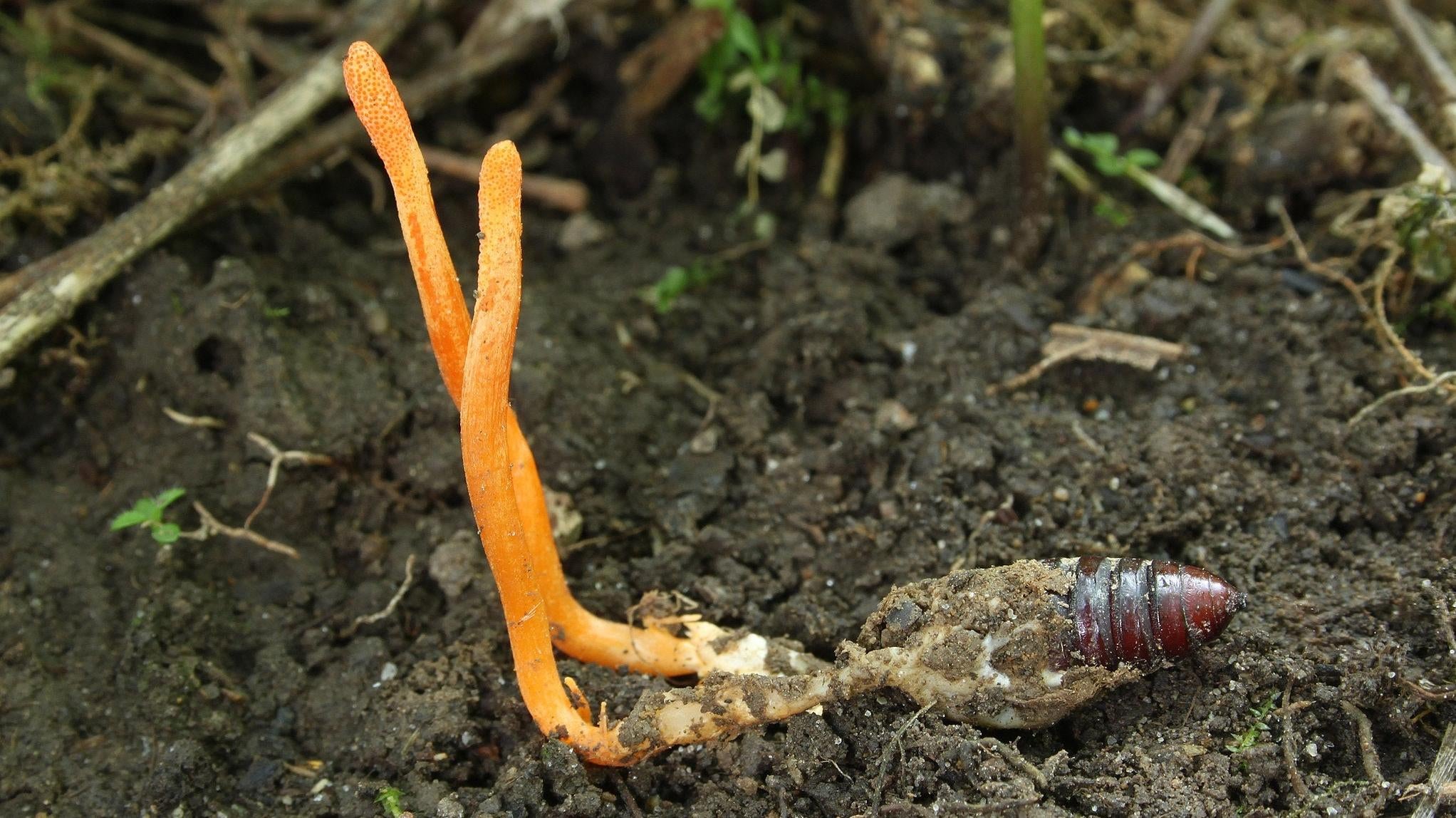HBO has another bonafide hit on its hand with the recent release of The Last of Us, the post-apocalyptic TV show based on the hit 2016 video game series produced by Naughty Dog. Both the game and show (at least through the first three episodes) weave together a blend of pulse-pounding action and gut-wrenching drama, as protagonists Joel and Ellie journey across the ruins of the United States.
The central cause of said apocalypse is a fungal infection that turns its victims into zombie-like creatures. While the fictional disease has its fantastical aspects, it’s based on the very real Cordyceps and Ophiocordyceps — two related families of parasitic fungal species that spread by manipulating the behaviour of their insect or arachnid hosts. Real and creepy as those fungi are, it’s unlikely that any existing Cordyceps species will pose that sort of danger to humans, at least in the near future. Among other things, it’s taken millions of years for the fungi to evolve their unique way of life with any one specific bug, and our human biology has little in common with these hosts.
But that’s not to say that there aren’t some lessons to be learned from The Last of Us. In the first minutes of the first episode, an expert warns in 1968 that fungi could become a more serious threat to humans under the right conditions, which include an increasingly warming Earth. Many experts in the real world do believe that that climate change is making fungi more dangerous to humans, though not everyone necessarily agrees on how these impacts are happening.
Fungi tend to require a certain range of temperatures to sustain life. Our typical body temperature, roughly 97 degrees Fahrenheit, is too high to be comfortable for most fungi to regularly infect us. But as climate change raises the average temperature in many regions, the argument goes, some fungi will adapt and learn to thrive under the heat. And if people are routinely exposed to these heat-adapted fungi, some may then successfully make the jump into becoming a human pathogen.
“The other part of this, which has not gotten as much attention, is that a couple of different studies have postulated that human body temperature over the last 100 years is actually cooling,” George Thompson, a professor and infectious disease doctor at the University of California Davis Medical Centre who studies fungal infections, told Gizmodo. “So not only is the environment getting warmer, but we’re getting colder. And that’s going to further narrow that difference and put us at risk for fungal diseases.”
In recent years, a team of microbiologists has made the case that this scenario has already happened with Candida auris, a scary and recently emerging fungus that’s often resistant to the drugs we have available against it. C. auris has only been known to infect humans since 2009. Other researchers have found evidence that strains now found in humans only recently evolved from those naturally occurring in the environment, and that these newer strains are indeed more warm-loving.
Just last month, a team of researchers at Duke University published a study looking into exactly how fungi might become more hazardous to humans as the climate warms. In lab experiments, they grew the fungus Cryptococcus deneoformans, known to cause opportunistic infections, in both human-like and cooler temperatures, while sequencing the genomes of each batch. They found that genetic changes occurred much quicker in the heat-stressed fungi, and that these changes were caused by so-called jumping genes. Their earlier work has also suggested that mutations caused by jumping genes can help fungi survive heat or resist antifungal drugs.
The lesson, lead author Asiya Gusa told Gizmodo, is that fungi “may evolve more rapidly with warming temperatures than we anticipated, especially if heat stress acts as a trigger for mutation and adaptation.”
Intriguing as this hypothesis is, it’s not a sure thing, according to Dee Carter, a microbiologist who specialises in fungi at the University of Sydney and has written about the link between climate change and fungi.
Carter notes that while the climate in North America is becoming more tropical, many people already live in hotter regions, but there doesn’t seem to have been a substantial rise in virulent fungal species from these areas. Similarly, there are other fungi already known to live in hotter temperatures, but they aren’t common human pathogens. And while the emergence of C. auris as a human pathogen is certainly mysterious, climate change isn’t the only available explanation for its arrival. Another possible factor Carter brings up is the overuse of environmental fungicides, for instance. And as explained earlier, it would probably take a very, very long time for something like Cordyceps to evolve the same kind of horrific relationship with humans that it has with insects.

At the very least, the effects of climate change on turning fungi into human germs are probably more complex than simply turning up the heat past a certain point. But, “there are other aspects of climate change that are very likely to cause increased problems with fungi,” Carter says.
As extreme weather events like hurricanes become more common and fiercer, for example, more people could become physically injured and have their wounds infected with soil fungi that are normally uncommon sources of disease. The flooding left behind in the aftermath of these storms could also lead to the overgrowth of molds and other fungi that can cause allergies and skin infections. Droughts that lead to dust storms could kick up dangerous fungi into people’s lungs — something that may already be happening with Valley fever in the Southwestern U.S., (as with C. auris, though, there is some ongoing debate over this link).
“It’s also highly likely that fungi will affect us indirectly as plant pathogens due to all of the above and to greater host susceptibility (with plants weakened by floods/drought/heat), causing crop and ecosystem loss and resulting in food shortages and environmental degradation that may in turn accelerate climate change,” Carter says. “This is really a bigger risk than increased infections of people.”
Carter doesn’t rule out that she might be wrong — that climate change could fuel the emergence of fungal species capable of causing widespread human disease. If a fungus ever did reach epidemic potential, we’d be in serious trouble. Compared to viruses and bacteria, we have much fewer drugs that can safely treat these infections and no existing vaccines.
Right now, fungal infections predominantly affect people already in poor health or with weaker immune systems. But researchers like Gusa say that there have been a growing number of Cryptococcus cases in people with healthy immune systems. And Thompson has noted that doctors unfamiliar with fungi could be missing infections like Valley fever as they start happening in places outside of their known endemic areas. So even if a fungal pandemic never ends up happening, fungi are still a public health menace. Much like bacteria, fungi like C. auris and Cryptococcus are steadily evolving resistance to the few weapons we do have, meaning each outbreak is getting harder to stop.
“We need more research into tracking the spread of fungal diseases and increasing our arsenal of antifungal drug treatments,” Gusa said. “This means we need better diagnostic tools, increased surveillance, new antifungal drugs and clinical trials for vaccine candidates.”
The Last of Us might be fiction, but the fungal threat is real.
